Do you know that you can use rooting hormones to help with the propagation of new plants?
Rooting hormone is a synthetic chemical that facilitates the propagation of new plants.
A way to create a new plant that is identical or the same as the parent plant is to take a piece of the plant: cutting and grow another plant.
Popular ways to make new plants are from root cuttings, stem cuttings, and leaf cuttings, which often make use of the rooting hormone.
This helps increase the chance of successful planting rotting in many cases.
When you make use of these chemicals, the roots tend to develop quickly and are often of higher quality than when the plant-rooting hormones are not used.
How you can use it? Keep on reading.
Rooting Hormone
Rooting hormone is a chemical that stimulates the root growth of the plant, often on plant cuttings.
These synthetic commercial products tend to mimic auxin, which is a natural plant hormone that stimulates root growth.
Moreover, it comes in powder, liquid, or gel form.
You do not need to use rooting hormone for cuttings.
However, when you use it correctly on plants that are often challenging to propagate, it causes a plant cutting to develop roots quicker often 2 to 8 weeks.
And they tend to be more robust than cuttings that do not take advantage of using the hormone.
It is important to note that a lot of gardeners make use of rotting hormones primarily on ornamental plants and to propagate succulents.
You can get this chemical from a local garden canter or order it online from a garden supply company.
Some plants like ivy tend to develop new roots quickly after placing them in a vase of water.
While other plants are harder to root and will need the addition of chemicals that mimic a rooting hormone.
These commercially available products contain indole-3-butyric acid (IBA), a chemical form of the plant hormone auxin.
Naphthalene acetic acid (NAA) is a synthetic rooting hormone that also helps prevent rotting.
Both of these help to stimulate root growth in cuttings.
Types of Rooting Hormones
It is important to note that you can find rooting hormones under a number of different brand names.
These formulas often come in different mediums, like powder, liquid, and get.
Powder and gel are easy rooting hormone products to use as they will need less precision.
Keep on reading to learn more about different forms of rooting hormones:
Powder Rooting Hormone: This is one of the most common products that you can find in gardening stores.
Rotting hormone powder is often the most effective and best stimulant for hobbyists or home gardeners who propagate houseplants or other common plants.
Liquid Rotting Hormone: You can use these as is, while others take the form of concrete, which will require you to dilute them first.
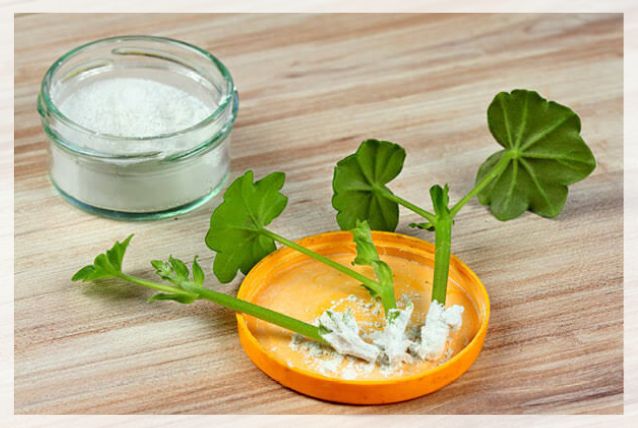
Make sure that you read the instructions carefully if you leave the cutting in the liquid for too long, or use a concentration that is too high, you will risk damaging or killing the plant cuttings.
Rooting Gel: It is just like that a rooting liquid, but, thicker.
If you are unable to find powder, you can use the gel as it is often easier to use than a liquid form.
Pros and Cos of using Plant Root Stimulant
Let’s discuss the pros and cons of rooting hormones:
Pros: Some pros of the rooting hormone are:
- it helps to reduce the time it takes for roots to grow, so there is less stress on the new plant
- one application tends to last up to 3 months
- it is easy to grow plants from cuttings
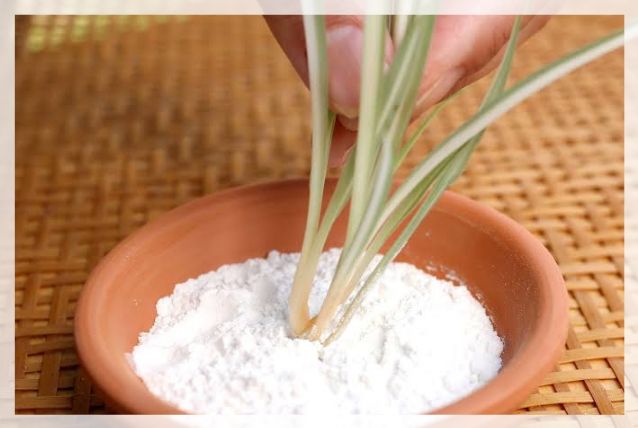
Cons: Some cons of using a rooting hormone are:
- some types of root stimulants can be harmful if you inhale or ingest them, so make sure that you do not lean over the hormone when you are adding it to the soil mix
How Long does it take a Rooting Hormone to Work?
If you are wondering how long will it take for a rooting hormone to work, then you are in luck.
To accelerate the propagation from weeks or months to as little as one week often depends on the product you are using.
The rooting hormone allows for new root formation so that you can transplant the new plant into the soil without damaging it any further.
Moreover, they come in a number of forms.
However, all tend to reduce the transplant shock and increase the rooting rate.
It is important to note that there is no major difference between rooting hormones, i.e. plant rooting hormone except which plant they stimulate and how strongly to do it.
But some rotting substances can take longer than others to become effective.
Learn more about Creating a Meditation Garden here.
The Amount to Use
One of the most common questions you may have in your mind is “How much rooting hormone do I need to use?”
The answer is not that simple.
It tends to depend on a number of factors, especially the plant you are propagating.
To give you an idea, rooting hormones have been created for plants like poinsettia, pansies, petunia, geraniums, and a number of others.
When you make use of this stimulant with woody plants or perennials, it can be easy to layer them into their own pots before rooting them.
By rooting plants in their own pots, you are able to prevent root circling that, in some cases, occurs when rooting plants in the container directly.
However, there are always exceptions.
If you have rooting problems, rooting hormones can help.
If you are susceptible that rooting hormones will be helpful as the plant material has been tested and shown to be difficult, it can help improve rooting percentage rates.
The next thing you look at is the rooting characteristics to want for the specific plant you are choosing to root.
Cuttings to Use
It is important to note that rotting hormones tend to work on a number of cuttings like new growth, woody stems, leaves, and roots to increase the odds of successful propagation.
However, if your plant blooms, make sure to wait until the blooms fade before taking the cutting.
You can use this stimulant on the stump of an established plant to initiate root branching.
However, avoid giving a new or established plant too much rooting hormone as it can damage the root system.
Moreover, rooting new plants from parents will need patience, and the cuttings tend to be fragile before the root system develops.
In most cases, keep the planting medium moist but not wet and provide light but not direct sunlight.
Tip: many experts advise that you should not use chemical stimulants with water propagation.
The water tends to wash away the hormone rendering it useless, and the substance will muck up the water.
Using Rooting Hormone on Stem Cuttings
Follow the steps below to use rooting hormone on stem cuttings:
1# With a clear knife or shears remove a fresh, healthy stem cutting from a parent plant.
The parent must be vigorous and healthy, and make sure that the growing tip is between 3 to 8 inches long.
Then cut the topmost few inches from the stem and make a cut near the node.
This is a slightly swollen node on the stem. Cut any leaves or flowers from the node area.
2# Mositen the bottom few inches of the cutting so that the rooting hormone can adhere or stick to it.
3# Pour some hormone into another clean vessel and dip or roll the bottom few inches of the cutting into it.
However, do not dip the cutting directly into the original rooting hormone container.
Also, do not apply the rooting hormone any higher than the final planting depth of the cutting.

Then shake off the excess powder by lightly tapping the cutting against the edge of the container.
4# Plant the cutting in a soulless potting medium.
Make a hole in the medium with a pencil or a similar tool and make sure that the planting hole is wide enough so that the rooting hormone does not rub off as you sink the cutting into the soil.
5# Tamp down the soil around the cutting to remove any air pockets.
Then lightly water using a spray bottle and keep the cutting warm at 60 degrees Fahrenheit or higher.
Rooting systems tend to develop best when the cutting is not placed in direct sunlight.
Learn more about Growing from Plant Stem Cuttings here.
Working with Leaf Cuttings
Some plants like a number of succulents do not have stems.
However, you can propagate them through leaf cuttings.
Depending on the leaf structure, you will need to apply the rooting hormone to the part of the leaf that is closest to the center of the plant.
Then cover it with a soilless potting mix.
Push the leaf partway into the mix.
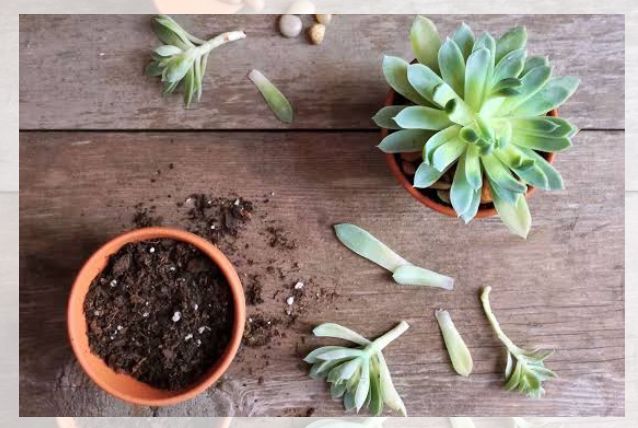
If the leaf tends to have a short stem, as in the case of African Violets, you will need to dip the stem in the rooting hormone and plant it in the potting soil just like you do with stem cutting by sinking the stem up to the leaf into the potting mix.
In some cases, it is important to cover the backside of the leaves with the rooting hormone.
Lay them on top of the moist soilless mix and lightly press down until the leaf touches the potting medium.
Keep all rooting plants out of direct light until they develop a robust root system.
Working with Root Cuttings
You can also put rooting hormone on root cuttings.
These are just that: A piece of the parent plant that will gradually produce a new plant.
It is important to note that fall is the best time of year to take root cuttings so that they have the entire winter to produce a new plant in time for spring.
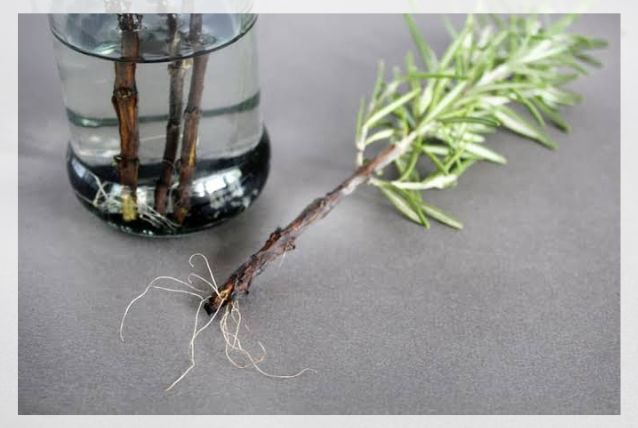
Follow the steps below:
- remove the soil from the root area of the parent plant
- then cut a 2-inch piece of slender roots and re-cover the area of the parent plant
- roll the root cuttings in the rooting hormone and plant them shallowly in the potting medium
- keep the medium moist but not wet
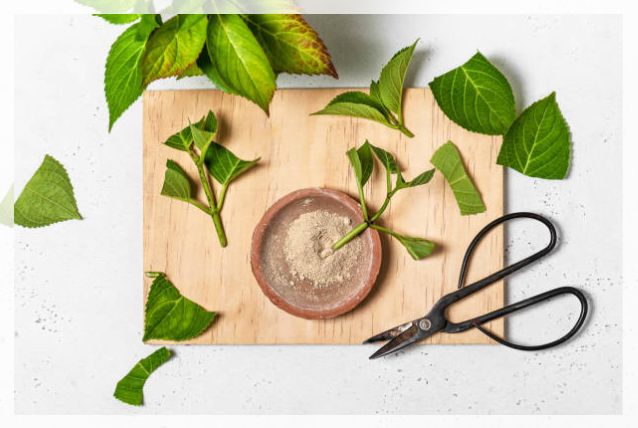





Leave a Reply